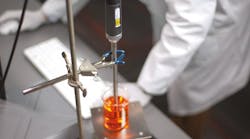From manufacturers to patients, every party along the pharma supply chain wants to see the market filled with innovative products that advance therapeutic treatments. Unfortunately, current barriers from regulatory bodies often prevent breakthrough drugs from ever reaching pharmacy shelves. The problem is one of consensus, since not all parties involved agree on which drug components stand to benefit from innovation. The industry as a whole accepts innovation when it applies to final drug products or the active pharmaceutical ingredients (APIs) that give them their potency, but not necessarily the often overlooked elements that account for the bulk of composition: Excipients.
There are many reasons to rethink this outlook. With novel excipients come new ways of delivering, applying and manufacturing drug compounds. Patients stand to benefit from improved compliance, alternative routes of delivery, upgraded safety profiles and even access to new medical advancements to treat unmet needs. Challenges related to complex and costly wearable biologic infusion devices could be overcome, and continuous manufacturing could be more easily implemented because of improved material properties. Less stringent regulatory constraints mean excipients could be used to deliver biotechnology faster and cheaper, while new excipients that have been designed with the flow rate and homogeneity of the continuous process in mind could be a boon to manufacturers.
In spite of this potential, the industry remains staunchly risk-averse, as pharmaceutical companies are hesitant to use excipients that have not been used in U.S. Food and Drug Administration-approved drug products — regardless of safety testing conducted by manufacturers. This article examines the importance of novel excipient innovation amid regulatory limitations, ways to spur innovation within the frame of regulations, and how paths to real innovation might be paved in the future.
Advancement by definition
To foster ongoing industry advancements, every component of a drug’s makeup needs to be able to advance along with it. Often the largest component of a drug formulation — excipients — are hindered in the ability to innovate because the current FDA and the European Medicines Agency (EMA) regulatory landscape offers no clear path for novel excipient approvals. In some cases, it can take up to 10 years to achieve drug approvals of products formulated with novel excipients.
Clarity around the definition of “novel excipient” would be a good first step and an immense help to the industry. Currently the term can mean several things: new chemical entities (NCEs), modifications of existing excipients, new grades of existing polymer excipients, new co-processed excipients where the individual excipients are already in-use in drug products, use of higher levels or a new route of exposure for an excipient already in a drug product. The industry would benefit from the FDA considering the information needed to evaluate each type of “novel” excipient differently, based on its level of “newness.” For example, an NCE will require much more information to evaluate than an existing excipient being used at a higher level of use.
Innovation for all means challenges for most
Drug formulators hit unnecessary challenges when attempting to use novel excipients. A lack of industry acceptance keeps multiple poorly soluble chemotherapeutics, biologics and other APIs from making it into the hands of patients. If excipient producers were allowed to implement a little more creativity and ingenuity, these compounds could be successfully developed into marketed products to enhance solubility, improve safety and efficacy, and provide optimal routes of exposure (e.g., shifting from injection to oral administration).
Excipient companies face these obstacles every day. For example, formulating long-term, shelf-stable liquid formulations of protein-based biologic drugs — such as therapeutic enzymes, antibodies and fusion proteins — is an ongoing challenge in the industry. Few excipients that are part of currently approved drugs can address these formulation challenges, so the toolbox is limited for this complex problem. Polysorbates present a particular concern in terms of stability: There is too much batch-to-batch variability, they degrade, and they provide insufficient stabilization of certain drug substances. Novel excipients could unlock the potential of all these substances.
The technical issues formulators face are considerable, but the biggest obstacle to the acceptance of novel excipients is a lack of FDA recognition. Because of this, solutions to common problems are overlooked due to the assumed risk of using an excipient that is not FDA-recognized. This leads many manufacturers to design their drug products using only what’s available in the FDA’s Inactive Ingredients Database (IID) instead of a using a Quality by Design (QbD) approach that will result in an optimum, robust formulation that spurs innovation. Challenges in solubilization, delivery, stability and speed-to-market that could be addressed by novel excipients will remain if regulatory approval is granted only to drugs that contain excipients solely from the current IID.
No path for approvals
If a formulator uses a novel excipient, there is no established regulatory pathway for the FDA to independently assess the safety of the excipient outside of the context of the drug formulation. This is a barrier to innovation, regardless of whether the excipient is a new chemical entity or a modification of an existing compound.
According to a 2015 report by the International Pharmaceutical Excipients Council (IPEC), current policies are creating barriers for innovation and significant confusion throughout the industry. Although IPEC-Americas has been advocating with the FDA since 2011 to resolve this issue, an evaluation process has yet to be implemented. But slow and steady progress is being made. To solve the problem, the FDA could establish a program to evaluate the toxicology and quality of novel excipients intended for use in human drug products. A novel excipient review program would encourage the development of new excipients and enable the next generation of innovative medicines to reach patients.
What can be done right now?
Even in the current regulatory climate, forward-thinking excipient companies are working to push the boundaries of excipient development. Some have even modified existing excipients in an attempt to give pharma manufacturers more flexibility. For example, variations of hypromellose (HPMC) can help pharmaceutical manufacturers enhance the drug-release properties of a wider variety of APIs during hot-melt extrusion and spray-drying processes. HPMC can be designed in a way that keeps the chemistry identical to other grades of HPMC, differing only in substitution level while allowing it to be processed by technologies necessary to formulate amorphous solid dispersions. This, in turn, helps to bring very valuable drugs to clinical and patient populations that may otherwise be halted.
Working within a regulatory framework to spur product advancements may be innovative, but it is not without caveats. These new grades of HPMC are within the current parameters defined for food grades of HPMC and can be used in food up to 20 g/day. However, due to the defined substitution limits in the excipient monograph, it is considered novel for pharmaceutical use. This is a reflection of the pharmaceutical industry’s hesitancy toward adopting novel excipients because of added risk during New Drug Application (NDA) or Abbreviated New Drug Application (ANDA) review. For new chemical entity excipients, there is no history of use in a marketed drug product. The FDA could help matters by establishing a process to review and establish the safety and toxicology of NCEs with information submitted by the excipient manufacturer, which would address the reluctance on part of formulators to use them.
Image courtesy of DuPont Nutrition & Biosciences
The FDA considers all grades of HPMC as “Generally Recognized as Safe” (GRAS) for food use. A new substitution grade of HPMC could hypothetically be considered a novel excipient with minimal risk, since HPMC chemistry is very well known and its safety has been established. With some added clarity on the subject, patients could see a host of benefits, which include a reduction in required dose or number of tablets to be taken for greater compliance, and a clearer path to market for difficult-to-solubilize APIs that could improve treatments.
More than anything else, patients stand to benefit from drug formulations that are designed from the ground up for optimal performance. Rather than depending on approved excipients that may not necessarily deliver the finest performance or care, formulators would be free to use the right excipient for the right application, regardless of that excipient’s track record of use.
What could the future of excipient innovation look like?
After understanding the industry’s desire for innovation and the barriers the regulatory process is creating for manufacturers, the FDA is seeking public input on a proposal to establish a pilot novel excipient recognition program to develop a regulatory pathway. This type of program will reduce the level of risk pharmaceutical companies take when utilizing a novel excipient in a drug formulation.
Currently there are no incentives to develop a novel excipient, but with a solid pilot plan in place, that could change. For excipient manufacturers, potential incentives include future revenue and profit from excipient sales. For some excipients, volumes are very low, so there has to be a mechanism by which value can be captured. If the market floods with excipient options, then it becomes significantly more difficult to capture value. Therefore, one can recognize the advantage to having intellectual property protection on an excipient and its use, in addition to FDA recognition.
The timelines to get a drug that contains a novel excipient approved and commercialized are often longer than the timelines to get a new API approved. Once the excipient industry realizes and validates a challenge that needs solving, such as poorly soluble drugs, the steps to get a solution ready for the pre-clinical or clinical stage are daunting. Manufacturers need to identify a solution that is both technically sound and commercially viable, define optimal synthesis routes, scale up the material to current Good Manufacturing Practices (cGMP) standards, conduct toxicology assessments and validate performance with selected customers. Depending on the complexity of the solution, following these steps can take three to 10 years. Excipient producers also face a lengthy and expensive development time, taking 25 years or more to realize meaningful sales, which only compounds the total timeline and risk profile of a drug candidate.
A successful FDA novel excipient pilot program would evaluate the safety, toxicology and quality of novel excipients intended for human drug products. The FDA anticipates that submissions to such a program would include the anticipated methods of administration and studies that support the safe consumption of novel excipients at anticipated levels, as well as information on duration or exposure. The pilot program would accelerate excipient innovation, and ultimately encourage development of new excipients to enable the next generation of drugs to reach patients.
As we work with all regulatory bodies involved to drive the future of novel excipients, it’s important to ensure that such a program addresses all types of new compounds in a manner that prevents redundant, repeat or non-clinical testing, and ultimately reduces animal testing. The program should also promote public health benefits, and a more consistent approach from FDA reviewers should be implemented — for example, if an excipient is already safely used in food, the FDA should take that into consideration when reviewing novel excipients.
The desire for all participants along the pharma supply chain to drive innovation will always be a part of the industry. If an agreement can be reached that excipients should be advanced to the same degree — and within the same timeframe — as APIs and finished drug products, it could usher in an era of new therapies, increased functionality and broader portfolios. It’s an unprecedented opportunity to elevate and improve an entire industry, and we look forward to the day when such a goal can be achieved.






